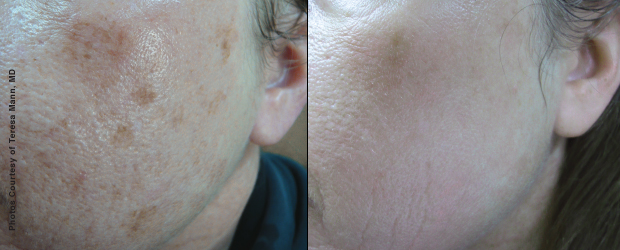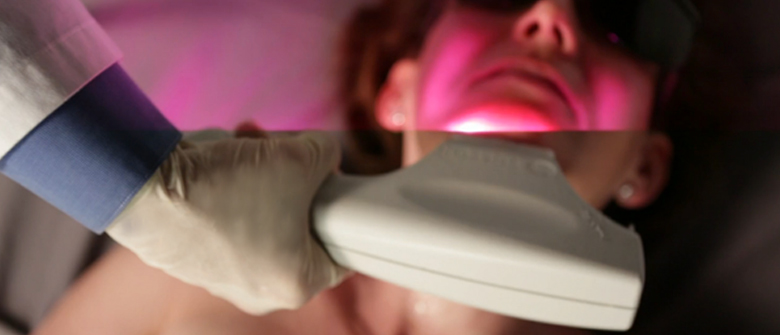A wide range of scientific publications and research has been carried out on BBL recently. One of the most serious of these is Patrick Bitter, Jr. at Stanford University., MD and the study by his team showed that SCITON BBL regenerates gene structures in aging human skin, making them similar to those in younger skin.
Research has shown that” Forever Young bbl ” treatments regenerate and rejuvenate the skin and delay skin aging in such a way as to provide a natural image. More than 1000 gene structures have been renewed, resulting in a reduction in flexibility losses and more regular collagen accumulation, improving fine wrinkles and pigmentation irregularities.
Regular Forever Young BBL skin resurfacing treatments reduce the long-term signs of aging of the skin in a way that provides a natural look, and the skin looks fresher, livelier and younger.
You can also view the full before and after treatment pictures from Forever Young BBL‘s site.

WHAT IS SCITON BBL?
BBL (Broad Band Light) means wide band light. It is a kind of Intense Pulsed Light Source developed by Sciton and patented by its technology.
Recently, exfoliating (ablative) lasers have been used to improve the quality and appearance of aged skin. But because these applications peel the skin, they can negatively affect the patient’s daily life for a long time. Especially patients who are not working or available in terms of time can not be a form of treatment that can be preferred. BBL works in a different way than the working principle of all these peeler lasers. It almost never disrupts people’s normal lives.
Sciton BBL produces light that is distributed at various wavelengths in the 560 – 1200 Nm range. Each wavelength is absorbed by different types of color-giving substances contained in tissues. It is widely used in the treatment of fine wrinkles, color irregularities and spots on the skin, redness caused by capillaries, removal of sagging, for the purpose of skin renewal (skin rejuvenation) and permanent reduction of unwanted hair.
In this study, the BBL module built on the SCITON Joule platform was used.
Regeneration is a term meaning skin renewal, skin rejuvenation. But its content can be perceived differently by researchers and the public. So it must be carefully defined. In this study, regeneration is used in the sense of regeneration of aged cells and tissues by changing their structure in such a way as to gain a young characteristic. The question to answer is whether after BBL treatment, the skin is really regenerated at the molecular level to provide a younger image, or is it just a reaction stimulated by a certain level of skin damage. If the skin is damaged in a controlled manner, it can also create new tissues and gain a better appearance in this process.
The aim of this study is to determine the response of global gene structures to BBL treatment in skin that has undergone a natural aging process and aged by light effect. In as wide a range as possible, the effect of aging and BBL therapy on RNA, changes in gene structure and order have been observed.

Method
Skin renewal (regeneration) study was conducted in accordance with the Helsinki Declaration of principles. 5 female patients over 50 years of age underwent regular BBL treatment on the left forearm areas with moderate or advanced aging effects. Skin rejuvenation treatment was completed as a result of 3 sessions at 4 week intervals. 2 or 3 passes were passed in each session. 3. 4 weeks after the session, the patients were treated with skin renewal by punch biopsy technique and a 4 mm biopsy was taken from the adjacent untreated skin areas. 5 volunteers who were not exposed to sun aging under the age of 30 who were not treated for skin renewal with BBL received a skin biopsy in the same way.
Clinically evaluated, it was observed that after 3 BBL treatment, the skin showed improvement and development in terms of visible aging parameters. Fine wrinkles and color irregularities decreased, as well as improved overall skin appearance.
Tissue samples taken from untreated and untreated areas of elderly patients and young patients were examined histologically at the molecular level and compared in detail. Histological examination showed that wrinkles caused by loss of elasticity in the treated areas of elderly patients were relieved compared to the untreated area and their prominence decreased. It was also found that the epidermal thickness of the treated areas increased significantly.
Compared to Gene structures, it was found that the treated skin samples of older patients were more similar to the skin samples taken from younger patients than those who were not treated. 1293 gene structure (expression) has been regenerated. Skin resurfacing has been confirmed.
This skin resurfacing study has shown that regular Sciton BBL treatments change their gene structure, making older cells structurally similar to younger cells. This is the first study conducted in this area. In contrast to the principle that controlled damaged skin forms new tissues, skin renewal is achieved permanently at the molecular level.



